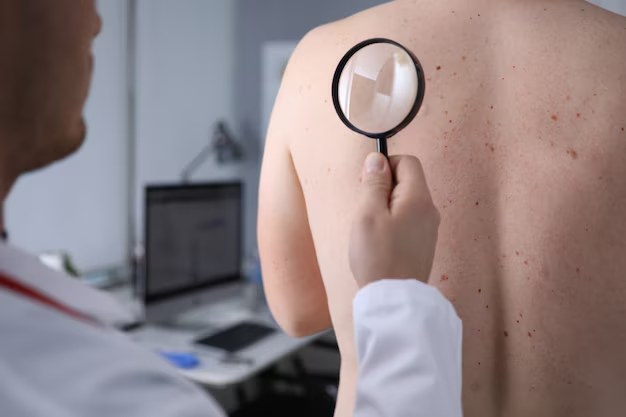Recognizing the Signs: What Does Skin Cancer Feel Like?
When you think of skin cancer, what comes to mind? For many, it conjures images of unusual-looking moles or unexpected growths on the skin. But how does it actually feel? This startling yet crucial question deserves an answer that not only recognizes the needs of those seeking information but also offers a wealth of practical insights pivotal to early detection and understanding.
Understanding Skin Cancer: More Than Meets The Eye
The Different Faces of Skin Cancer
To appreciate how skin cancer might feel, one must first understand that there are various types, each with unique features and symptoms. Primarily, skin cancer is categorized into:
- Basal Cell Carcinoma (BCC): Often manifests as a pearly or waxy bump and is the most common type of skin cancer. It's primarily noted on sun-exposed areas like the neck and face.
- Squamous Cell Carcinoma (SCC): Generally appears as a firm, red nodule or a flat lesion with a scaly crust. It can develop on sun-exposed areas but may also affect the mucous membranes.
- Melanoma: The most aggressive form, it might transform an existing mole into a potentially life-threatening condition. Melanoma lesions often exhibit irregular borders and multiple colors.
The Sensation Factor: How Does It Feel?
While skin cancer can indeed look distinct, feeling its development can be trickier. Here are key sensations to be mindful of:
- Itchiness or Tenderness: A lesion may feel itchy or tender, resembling a mosquito bite that stubbornly refuses to heal.
- Crusting and Bleeding: Persistent sores that crust over or bleed could indicate underlying malignant changes.
- Numbness or Tingling: Because skin cancer can begin to involve nerves as it progresses, areas may exhibit numbness or tingling.
- Changes in Texture: Any growth that thickens, scales, or grows unevenly warrants closer examination.
Warning Signs Worth Noting
Spotting skin cancer early can be lifesaving. Here are warning signs other than physical sensations to keep on your radar:
Visible Changes
- Asymmetry and Irregular Borders: Unlike benign moles, cancerous growths are typically asymmetrical.
- Color Variations: Specifically for melanoma, multiple colors (brown, black, tan, red, or white) within a single lesion may appear.
- Diameter and Evolving Nature: Growths larger than a pencil eraser, or any noticeable change over time, should prompt a dermatologist visit.
Non-Visible Factors
- Persistent Irritation or Discomfort: Any irritation that doesn’t resolve with typical over-the-counter treatments should be taken seriously.
- Lesions That Don’t Heal: Cuts or bruises usually heal over time. An area that doesn’t may be cause for concern.
Digging Deeper: Linking Risk Factors with Symptoms
Sun Exposure: The Silent Agitator
Sun exposure is a known risk factor for developing skin cancer. The UV radiation penetrates the skin, potentially altering cells' DNA. A surprising number of people experience sunburn yearly, unwittingly increasing their cancer risk. You might not feel immediate discomfort beyond a sunburn, but it heightens future cancer risk.
Genetic Predispositions and Skin Type
Certain skin types and genetic factors can increase susceptibility to skin cancer. Individuals with fair skin, light eyes, and hair are typically at higher risk. Understanding one's genetic makeup can offer valuable foresight and encourage proactive measures.
Practical Prevention Tips: Taking Action
While understanding symptoms is essential, knowing preventive measures is equally crucial. Simple tactics can dramatically lower risk:
- Routine Skin Checks: Monthly self-examinations increase the chances of early detection.
- Sunscreen Application: Broad-spectrum SPF 30 or higher shields skin from harmful rays.
- Protective Clothing: Hats, sunglasses, and long-sleeved clothing provide a physical barrier against UV rays.
- Avoiding Tanning Beds: Artificial tanning is not safer and can significantly augment risk.
- Seek Shade: Particularly during midday when the sun is most intense, promote safer skin habits.
Recognizing the Role of Healthcare Professionals
Annual check-ups with dermatologists are instrumental. Professionals can identify more subtle signs that remain unseen or unfelt by the untrained eye. Regularly booking these check-ups can ensure peace of mind and better health outcomes.
Moving Beyond Awareness: The Psychological Aspect
Dealing with the potential of skin cancer involves more than physical health. Emotions such as anxiety or fear are common when suspecting skin abnormalities. Recognizing these feelings as normal can ease the psychological burden.
Building Support and Resilience
Support networks—whether online, through friends, family, or support groups—can provide collective wisdom and reassurance. Sharing experiences not only offers comfort but may also offer practical advice and motivation to monitor changes diligently.
Concluding Insight: Empowerment Through Knowledge
Understanding what skin cancer feels like is more than recognizing physical symptoms; it’s about adopting a proactive stance toward skin health. Awareness and early detection are your most effective tools against this prevalent disease. By staying informed, making wise lifestyle choices, and involving healthcare professionals, you empower yourself with invaluable advantages for protecting and maintaining your skin’s health.
Quick Reference Summary 📝
- Types of Skin Cancer: BCC, SCC, Melanoma
- Common Sensations: Itchiness, tenderness, crusting, bleeding, numbness
- Key Observations: Asymmetry, irregular borders, color changes, persistent irritation
- Risk Factors: Sun exposure, genetics, skin type
- Preventive Measures:
- Regular skin checks
- SPF 30+ sunscreen usage
- Protective clothing
- Avoiding tanning beds
- Seeking shade
- Mental Health: Connect with support networks for psychological strength
Stay vigilant, informed, and proactive—your skin will thank you! 🌞🛡️

Related Articles
- Are Breast Cancer Lumps Painful
- Are Chills a Sign Of Cancer
- Are Colon Spasms a Sign Of Cancer
- Are Lytic Lesions Always Cancer
- Are Polyps Cancer
- Can a Blood Test Detect Cancer
- Can a Ct Scan Detect Cancer
- Can a Dexa Scan Show Cancer
- Can a Gastric Emptying Scan Show Cancer
- Can a Lung Biopsy Cause Cancer To Spread